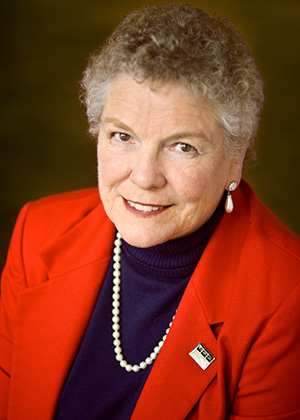Blog
Conversations with Kay, Part 1

It would not be an understatement to say that the very existence of National Nurses United, and the modern bedside nurses movement it represents, would not be possible today without the leadership of Kay McVay, RN.
McVay, a longtime Kaiser Permanente intensive care unit nurse from California, just celebrated her 80th birthday in January. In her career, she has seen nursing practice change from a time when RNs were not even allowed to draw blood to when they are routinely performing life-saving interventions, using the most sophisticated equipment, and assessing the sickest and most fragile of patients.
And though the practice of nursing has evolved at a breakneck pace over the last 50 years, the working standards and salaries of nurses have not – a failure largely attributable to the extremely classist culture of the country’s state nursing associations and its parent organization, the American Nurses Association.
It might sound odd to NNU members today who are used to their organization championing bread-and-butter nursing issues such as safe RN-to-patient staffing ratios and fair contracts, but, as late as the 1990s, the vast majority of the state nursing associations did not prioritize the concerns of the bedside nurse. They were controlled mainly by nursing executives and nursing academia types who actually thought that if you were a nurse who still valued or (gasp!) enjoyed providing hands-on patient care at the bedside, that you must be not very smart, not very ambitious, not very worthy, or all of the above.
Kay McVay helped change all of this.
Starting in 1992, McVay, a handful of other RN leaders, and dedicated staff, including now-NNU Executive Director RoseAnn DeMoro, successfully worked to win back control of their state nursing organization, the California Nurses Association, for bedside nurses. CNA’s “staff nurse rebellion” spurred its secession from the American Nurses Association in 1995 and paved the way for many more states to follow suit, including Massachusetts, Maine, Minnesota, Michigan, and New York. Many of these states are the founding members of National Nurses United, now the vanguard organization for registered nurses across the country.
As the new CNA’s first president, Kay McVay has been a key leader every step of the way in building this new nurses movement. Beginning in this issue, we will be regularly sharing interviews we are conducting with McVay about all that she has witnessed over her 80 years. We hope that through her stories of life, of her nursing career, of her involvement with the California Nurses Association and National Nurses United, you will better understand how far registered nurses have come, and how far we still have to go.
In this column, Kay gives us a glimpse of what it used to be like as a staff, bedside nurse to deal with the old California Nurses Association, pre-1993.
Kay, you always refer to the old California Nurses Association as headed by “the ladies auxiliary.” What do you mean by that expression?
It refers to a type of society group that was popular back then for women, especially the wives of men who were in some kind of association, to belong to. They would typically concern themselves with hosting charity events and social functions that would make them look good and confer them a certain social status, but that were ultimately just superficial and never addressed any real problems.
So it’s the 1980s, you had a work problem, and you called the Ladies Auxiliary. What was your problem and how did they respond?
Well, we were being told to stay and work overtime or come in and work whether you had obligations at home or not. And if you didn’t stay or come in, you could be fired. I would be called in at two in the morning, and I would go. We needed to work these types of problems out, and nobody was willing to do anything, to say anything, or to give you any insight into what to do or how to possibly talk about it with your superiors. So I remember calling the person who was in charge of nursing practice because I wanted some help in how to handle this problem, and the person told me that I had a union and I had to take my problem to the union, that I couldn’t possibly get any help from her.
So for the Ladies Auxiliary, the union was this completely separate thing that had nothing to do with nursing?
Right. And back then, it really was a separate department, the Economic and General Welfare division. There was no understanding that your working conditions and standards were absolutely related to nursing practice and the care you could provide as a nurse.
Who were these Ladies Auxiliary members and where did they come from?
They were academics and managers for different hospital chains, including Kaiser.
It sounds like they were really disconnected from actual nursing.
Their attitude was that if you remain at the bedside, you must not know very much. To me, that was the only reason why I became a nurse was to be at the bedside. I didn’t want to be anything else.
Check back next issue to find out what Kay McVay did next.